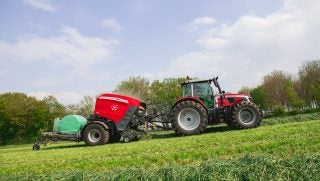Despite recession warnings and adverse precursors in 2022, the United States economy performed better than predicted in 2023.
Purdue University Department of Agricultural Economics experts annually provide insights into the national economy, trade, policy, and food prices for the year.
These findings were recently published in the Purdue Agricultural Economics Report’s annual outlook, including potential outcomes of a delayed farm bill.
“As we enter 2024, the farm bill debate’s complexities persist. With federal spending cuts in focus, the projected cost of the farm bill will likely take center stage in agricultural committee deliberations this year,” said Roman Keeney, associate professor of agricultural economics at Purdue University and co-editor of the report.
Inside the issue, Purdue agricultural economists predict an overall positive outlook for 2024 with modest GDP growth, low unemployment, decreasing inflation, and a potential lowering of interest rates.
Here’s a wrap-up on the U.S. economy
In December 2022, recession concerns triggered rapid interest rate hikes, but the predicted 2023 recession did not occur. By December 2023, positive economic indicators suggested a favorable outlook for 2024, anticipating moderated growth.
Despite the pessimistic sentiment, consumer spending rose by 2.3 percent above inflation in Q3 2023. Investment spending rebounded, and government purchases, particularly at the federal level, contributed to GDP growth. Both exports and imports declined, affecting trade dynamics.
In 2024, real GDP growth is projected at around 2.2 percent, with a potential slowdown in consumer spending and modest investment growth. Though experiencing a slight job growth slowdown in 2023, the labor market is expected to maintain a 4 percent unemployment rate by the end of 2024. Inflation is forecasted at 2.7 percent.
The Federal Reserve’s policy, marked by interest rate hikes in response to inflation, is expected to stabilize, with a median prediction of a 4.6 percent federal funds rate by the end of 2024. The three-month Treasury rate and the 10-year Treasury bond interest rate are projected to align with this trend, reaching approximately 4.6 percent and 4.4 percent, respectively, by December 2024.

An outlook for trade and policy
In 2023, the Russia/Ukraine war disrupted agriculture trade, impacting fertilizer and wheat markets, while oil and gas markets eventually normalized. U.S. trade policy offered large subsidies to semiconductor and electric vehicle industries, raising World Trade Organization concerns and affecting export-oriented agriculture. The 2023 WTO fishing subsidies agreement highlighted its ongoing role.
The 2024 U.S. Presidential election, featuring potential candidates Biden and Trump, holds implications for trade policy. Past policies, especially Trump’s, influenced agriculture exports negatively. Challenges for export-oriented agriculture include limited market access improvements, a shift in policy focus, and consequences of sector-specific subsidies. Despite positive developments, uncertainties persist, shaping the sector’s future amid evolving trade policies.
Will 2024 bring a new Farm Bill?
In May 2023, the Congressional Budget Office projected a cost exceeding $1.4 trillion for a ten-year continuation of the 2018 Farm Bill, with nutrition programs claiming a significant share. The farm bill’s cost is poised to be a focal point in 2023 debates amid rising deficits, reaching nearly 7 percent of gross domestic product over the decade.
Farm bill priorities echo those of the previous year, emphasizing the total baseline amount to address diverse food and agriculture needs. Advocacy focuses on climate-smart agriculture, maintaining current crop insurance, and addressing concerns about direct farm payments. Integrating nutrition spending with farm income and agricultural conservation remains crucial for bipartisan support.
The outlook suggests new farm legislation might not take precedence until fiscal 2024 spending bills are resolved. Changes to mandatory spending programs could be negotiated during the budget process. Delays in federal spending bills will likely shift the farm bill debate into a challenging general election year, with potential scenarios ranging from constructive compromise to continued policy brinksmanship and uncertainty, potentially leading to the absence of a replacement farm bill by October 2024.
The Policy Analysis for the Economic Region will actively monitor and provide updates through ongoing policy briefs.





